Mediterranean Diet Vs Paleo Diet
By Mediterranean Living
Updated November 18, 2022
Here it is… our ultimate breakdown of the Mediterranean Diet vs Paleo Diet.
If you’re exploring healthier eating, you may have encountered dietary patterns like the Mediterranean and paleo diets. You’ve probably wondered what they entail and which one you should follow.
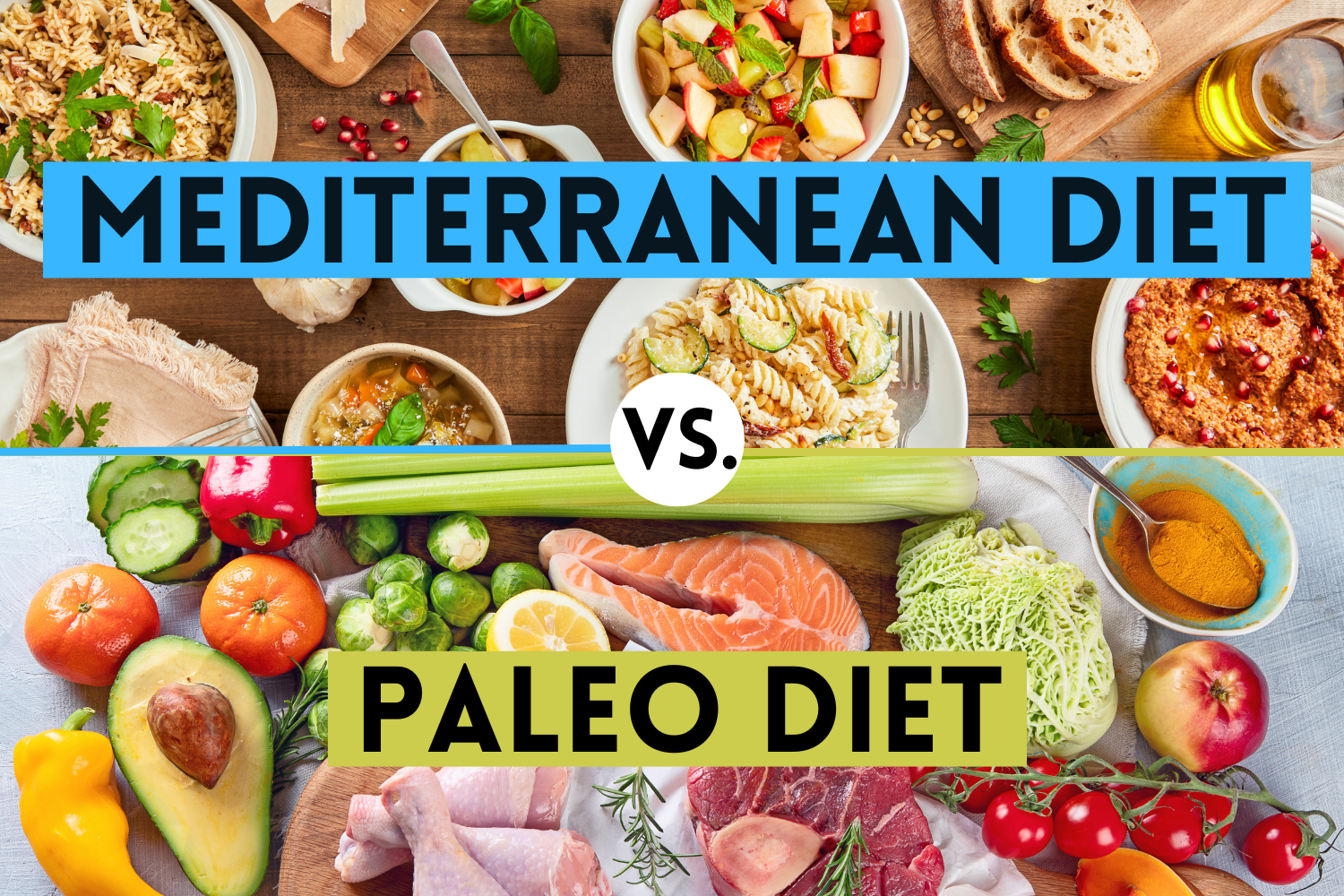
What is the Mediterranean Diet?
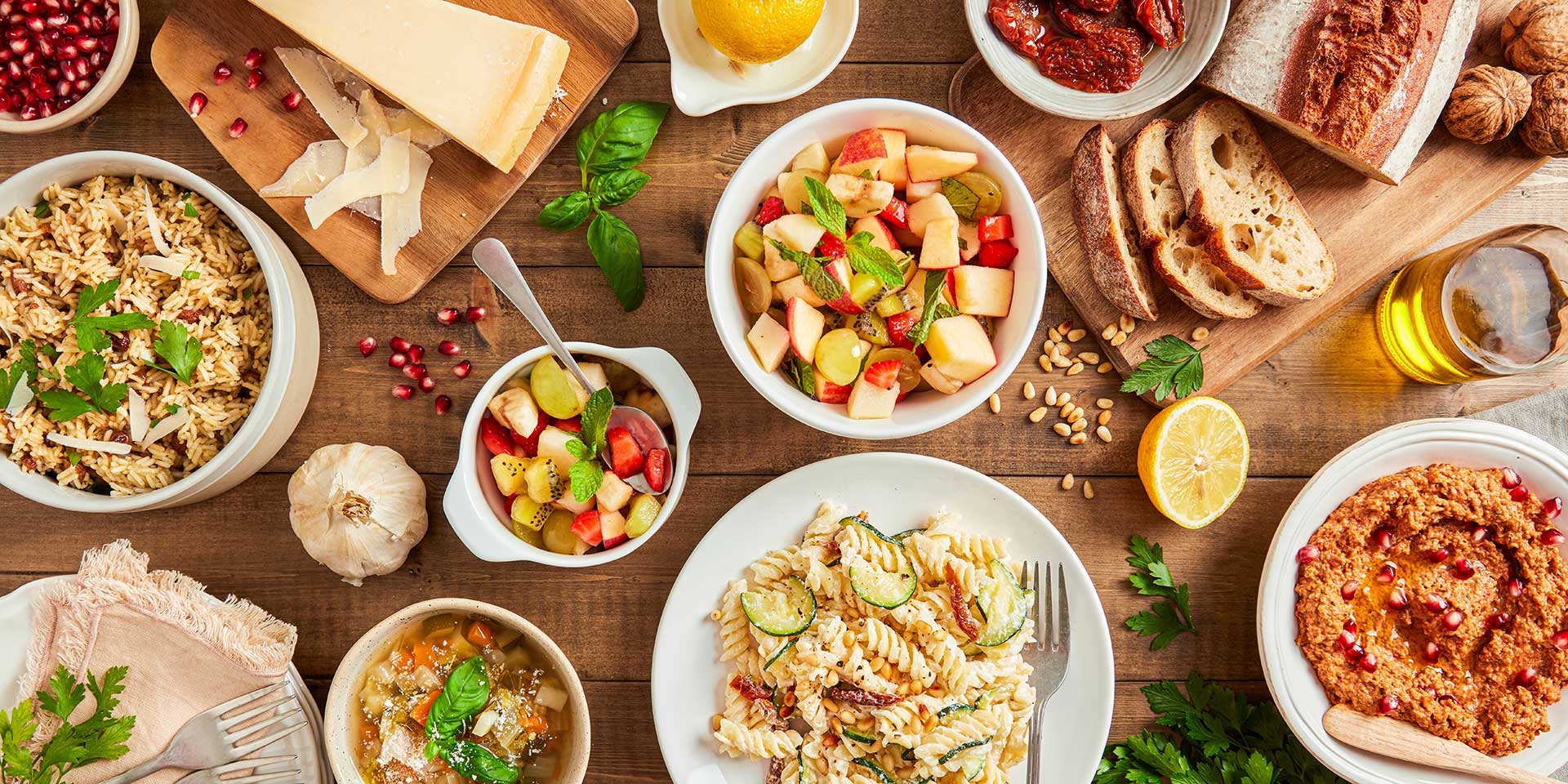
The Mediterranean diet is an eating pattern based on the traditional eating habits of countries around the Mediterranean Sea, such as Greece, Spain, Italy, Crete, the French Riviera, some parts of Northern Africa and the Middle East.
These countries use similar ingredients differently, depending on their culture, religion, ethnicity, climate, economy, and agricultural practices. Therefore, the Mediterranean diet encompasses a wide variety of dishes and recipes.
According to the Harvard T.H. Chan School of Public Health, people living in Mediterranean countries have historically displayed lower rates of chronic disease and higher life expectancy rates, despite having limited access to health care due to their healthy eating habits. A 2020 review notes that the Mediterranean diet continues to be rated as one of the healthiest diets in the world.
This eating style has gained popularity worldwide because fresh, delicious, and wholesome foods support better health.
Mediterranean culture also prioritizes enjoyment of the food and encourages people to dine with friends and family. This brings an added dimension of happiness and pleasure to the cuisine.
Eating Pattern in the Mediterranean Diet
The Mediterranean diet emphasizes eating high-quality, nutrient-rich whole foods. It prioritizes fresh, natural, locally-available ingredients over processed foods.
If you hear the word ‘diet’ and automatically think of a long list of things you’re not allowed to eat or drink, the Mediterranean diet will come as a pleasant surprise. Unlike other diets, which often restrict carbs, fats, grains, dairy, or alcohol, this diet doesn’t have strict rules, and no foods are off-limits; instead, it encourages moderation.
The Mediterranean diet encompasses the following eating patterns:
- Plant-based foods that are rich in fiber, such as vegetables, fruits, whole grains, nuts, seeds, and legumes
- Plenty of fish, which contains heart-healthy omega-3 fatty acids
- Lean sources of protein, such as chicken and lean meat
- Healthy sources of unsaturated fat, such as olives and olive oil (which is used as the cooking medium)
- Fresh herbs and spices, which are rich in antioxidants
- Probiotics, such as yogurt that promote gut health
- Moderate consumption of eggs, butter, and red wine
- Limited consumption of sugar, red meat, refined grains, and processed foods
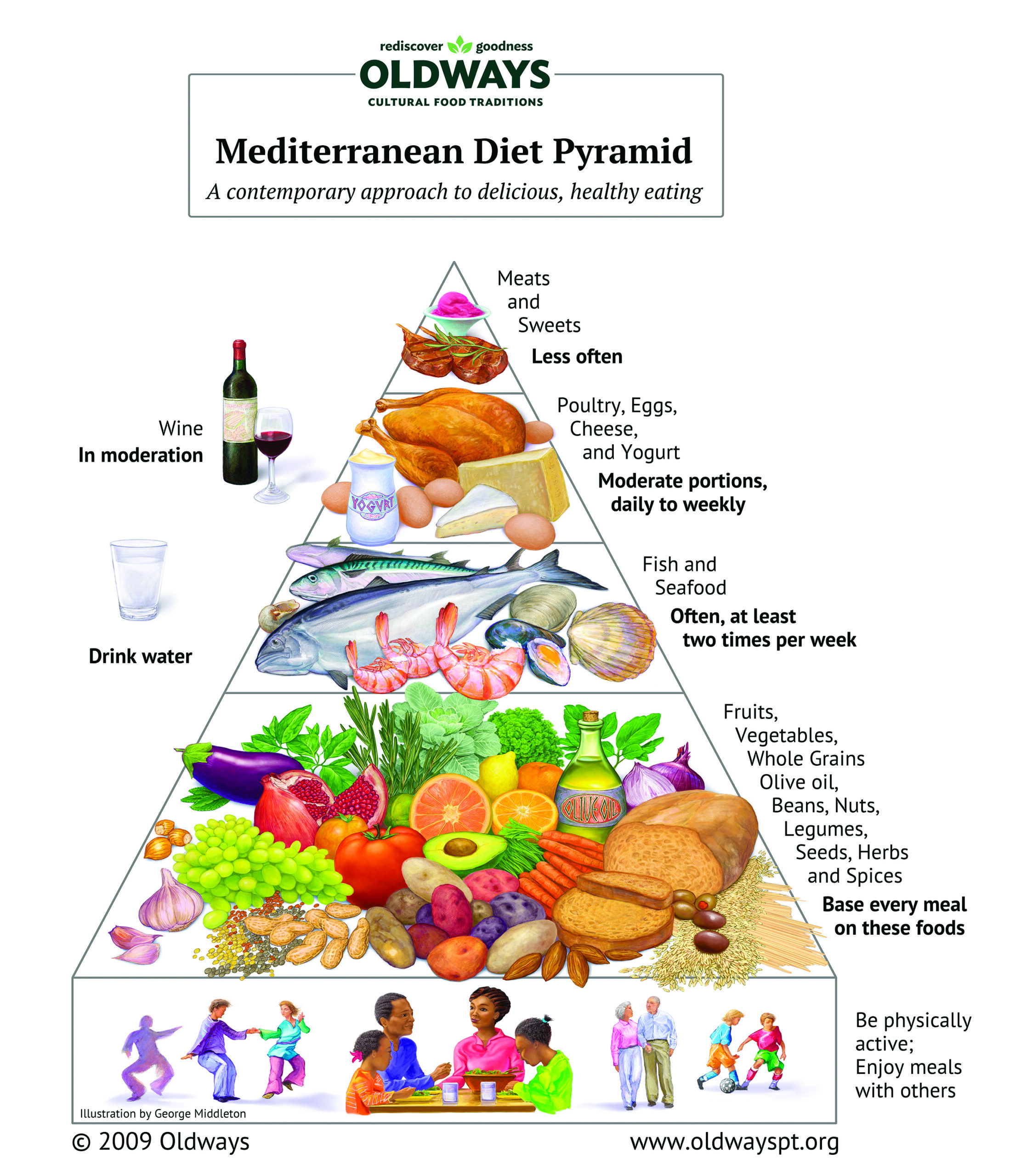
Courtesy of Old Ways
Ten of Mediterranean Living’s Best Recipes
Health Benefits of the Mediterranean Diet
A 2020 study notes that the Mediterranean diet has been widely studied and has proved to offer many health benefits.
Research has found that this diet can improve:
- Metabolism
- Brain Health
- Blood sugar
- Blood pressure
- Cholesterol
As a result, it can help reduce the risk of health conditions such as:
- Obesity
- Cancer
- Diabetes
- Heart disease
- Metabolic syndrome
- Neurodegenerative conditions
What Is the Paleo Diet?
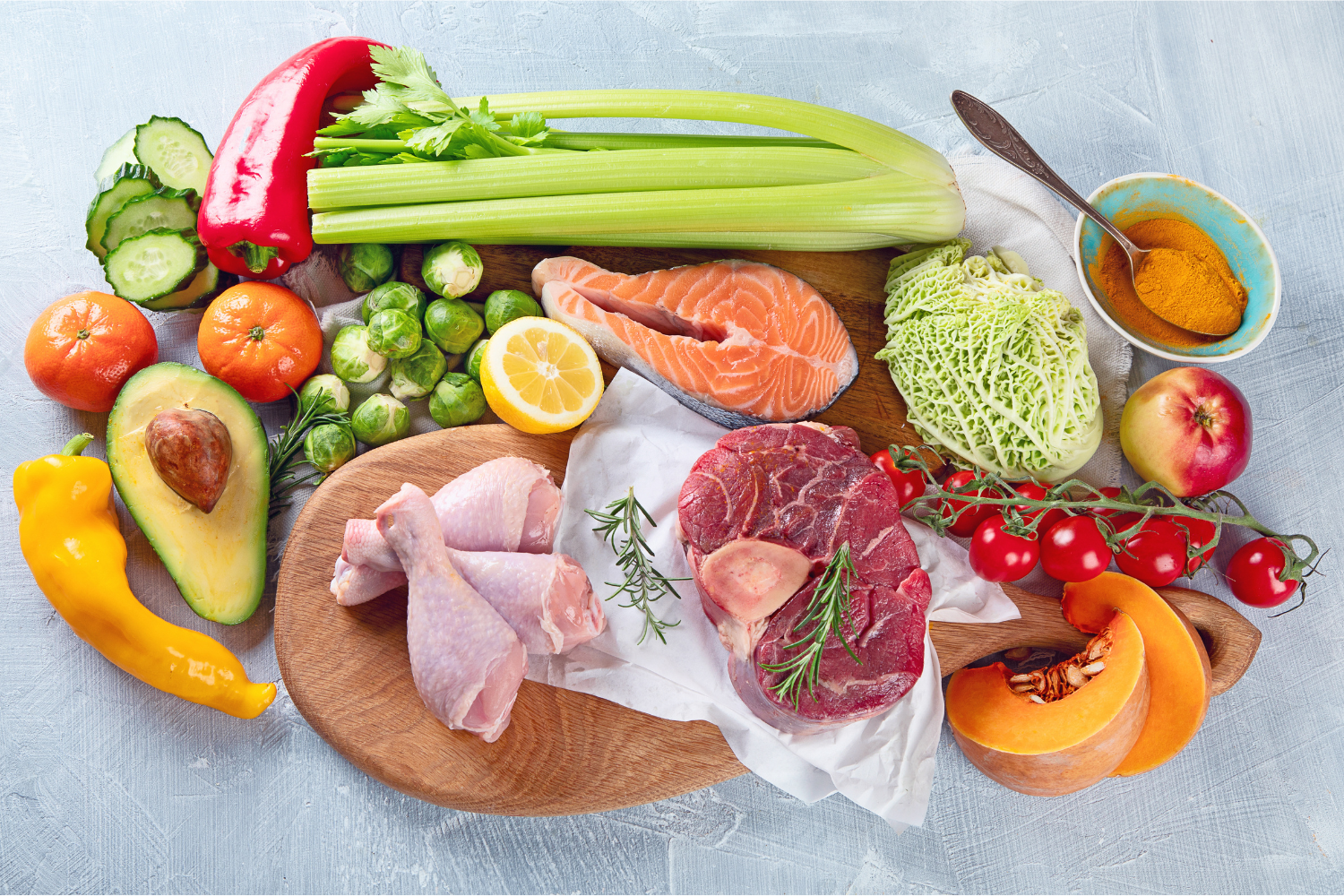
The paleo diet is modeled after what some believe our hunter-gatherer ancestors likely ate centuries ago, during the Paleolithic Stone Age. It is, therefore, also known as the caveman diet, hunter-gatherer diet, and Stone Age diet.
People of the Paleolithic ages used essential tools to hunt meat, catch fish, and gather plants; they hadn’t started farming, cultivating food, or raising livestock yet. The idea behind the paleo diet is that since human anatomy and genes have changed very little since the Paleolithic period, we should follow Paleolithic food habits to avoid the diseases and health conditions that have been ushered in by processed foods as a result of the agricultural and industrial revolutions.
Therefore, this diet focuses on naturally-occurring foods and restricts cultivated and processed foods. It is believed to be closer to the natural way of living, and in turn, it encourages more natural and conscious choices.
However, it’s worth noting that the paleo diet is controversial even among its supporters because everyone has different interpretations of what our ancestors ate (which likely varied considerably depending on where they lived) and how the diet should be practiced in the present, according to a 2020 study.
Eating Pattern in the Paleo Diet
The paleo diet limits food choices to what people could hunt, gather, or catch in prehistoric times.
The paleo diet eating pattern consists of:
- Grass-fed and pasture-raised meat and fish
- Organic plant-based foods such as fruits, vegetables, berries, seeds, nuts, and fungi
- Occasional consumption of root vegetables, such as sweet potatoes and cassava
- Moderate consumption of honey, coconut oil, and olive oil
It’s important to note that the paleo diet prohibits certain foods and food groups, such as:
- Grains, such as rice, wheat, oats, corn, barley, and rye
- Legumes, such as peas, beans, peanuts, lentils, chickpeas, soybeans, and alfalfa
- Dairy products, such as milk, yogurt, cheese, butter, cream, and ice cream
- Starchy vegetables, such as white potatoes
- Refined sugar, which is found in soft drinks, desserts, chocolates, and many other processed foods
- Refined flour, which is often found in bread, pasta, pizza dough, and other baked goods
- Refined vegetable oils, such as palm, sunflower, soybean, corn, or rapeseed oil
- Alcohol, since our ancestors hadn’t started fermenting grains as yet and it’s toxic for the body
- All processed foods, including salt, coffee, sauces, and salad dressings
Health Benefits of the Paleo Diet
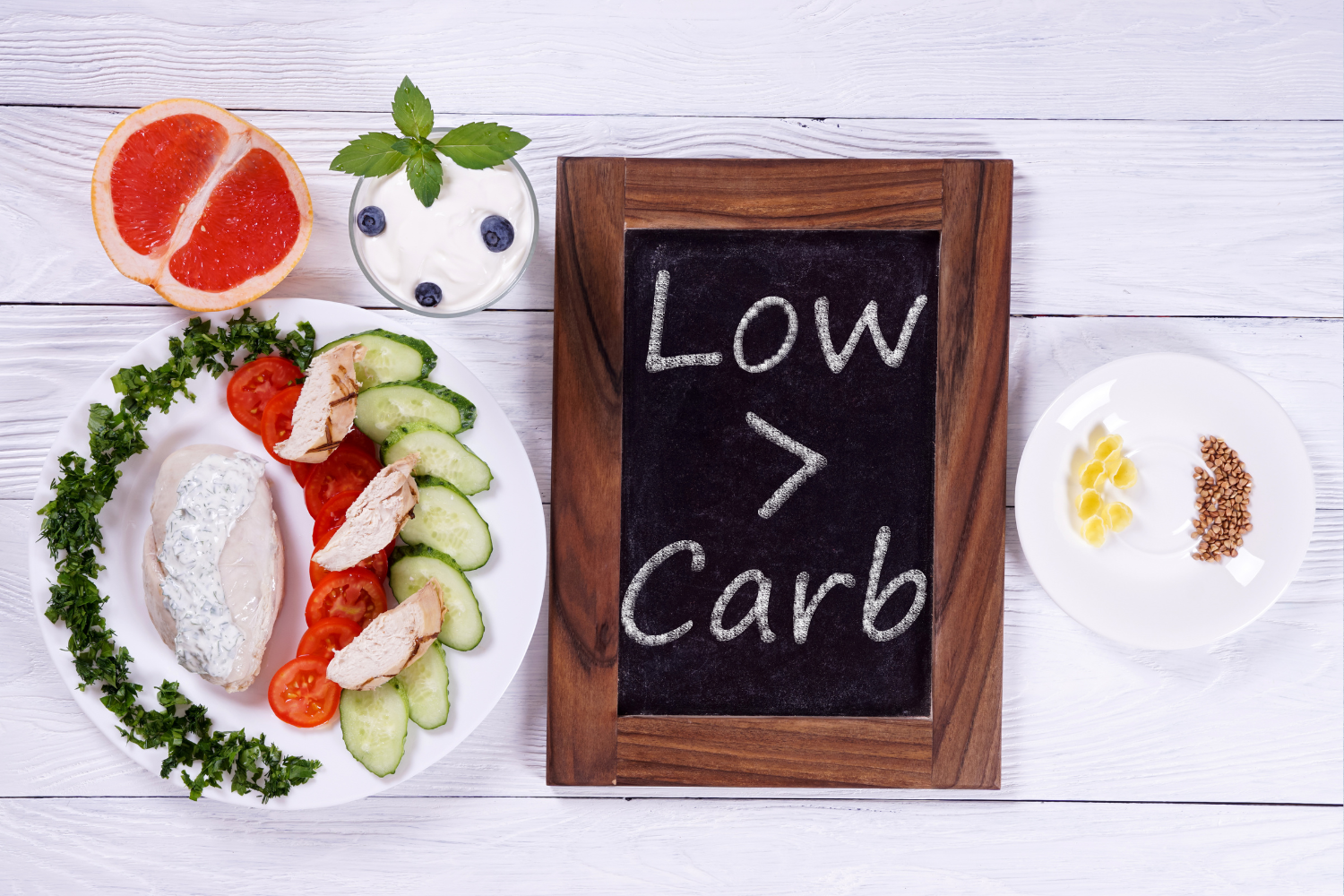
The paleo diet is classified as a low-carbohydrate diet; however, it is considered healthier and more balanced than other low-carb diets, such as the keto diet.
While there is some evidence that it may help with metabolism, blood sugar levels, and cholesterol levels, the merits of the paleo diet have not been conclusively proven. Its health benefits are controversial among the scientific community.
For instance, the Harvard T.H. Chan School of Public Health notes that since this diet is quite restrictive, it increases the chances of people experiencing deficiencies of key nutrients such as calcium, vitamin B, and vitamin D.
Mediterranean Diet Vs. Paleo Diet: Similarities
These are some of the similarities between the Mediterranean and paleo diets:
- Both diets prioritize whole foods such as fruits, vegetables, nuts, and seeds.
- Both diets include meat and fish.
- Both diets discourage processed and refined foods.
- Both diets typically involve simple preparations that highlight the ingredients’ quality, freshness, and flavor.
- Neither diet requires people to track calories or calculate portion sizes.
Mediterranean Diet Vs. Paleo Diet: Differences
Despite their similarities, there are some differences between the Mediterranean and paleo diets:
Flexibility
The Mediterranean diet doesn’t restrict any food groups, unlike the paleo diet, which restricts several food groups, including grains, legumes, dairy, and alcohol.
The Mediterranean diet gives people flexibility regarding their lifestyle, geographical location, and food preferences, making it easier to follow.
Commitment
Since the paleo diet is harder to follow, it requires higher levels of effort and commitment than the Mediterranean diet.
For someone on the paleo diet, going out may involve scanning menus in advance, making special requests to the chef, or carrying home-cooked food along.
Cost
Following the paleo diet is more expensive than following the Mediterranean diet. Apart from produce, which both diets include, the paleo diet includes a more significant proportion of meat and focuses specifically on naturally raised, grass-fed meats, which tend to be expensive.
By comparison, the Mediterranean diet tends to have smaller proportions of meat and includes grains, dairy products, and legumes, which are less expensive than meat.
Check out these cheap Mediterranean Diet dinner ideas for even more savings.
Sustainability
Research shows us that the Mediterranean diet is more environmentally-friendly and sustainable than the paleo diet in terms of its use of resources and its carbon footprint.
On the other hand, studies estimate that the paleo diet has a higher carbon and water footprint due to higher rates of meat consumption.
Nutrition
The Mediterranean diet covers all the major food groups, making it more nutritious and wholesome than the paleo diet. Eating a balanced diet helps reduce the risk of nutritional deficiencies and prevents diseases.
People may not get enough calcium, vitamin B, or vitamin D on the paleo diet to meet their nutritional needs.
Alcohol
The Mediterranean diet permits alcohol and allows people to drink occasional red wine with their meals.
The paleo diet doesn’t allow people to drink alcohol, although some people who follow a more flexible diet may choose to do so anyway.
Cooking medium
The Mediterranean diet prioritizes olive oil, a source of heart-healthy fats. The paleo diet also permits olive oil and other fats such as coconut oil and avocado oil.
Some people on the paleo diet also include dairy products such as ghee and grass-fed butter.
Heart health
The American Heart Association (AHA) recommends the Mediterranean diet because it can help prevent stroke and heart disease by improving risk factors such as blood pressure, cholesterol, obesity, and diabetes.
The AHA notes that extra virgin olive oil, an integral part of the Mediterranean diet, improves heart health by removing extra cholesterol from the arteries and unclogging them. The paleo diet doesn’t meet the AHA’s criteria for a healthy eating pattern.
Weight loss
Since the paleo diet cuts out many foods that typically contribute to weight gain, carbs, in particular, it can help people lose weight faster.
However, the Mediterranean diet may be easier to sustain in the long run, as it is easier to follow and incorporate into one’s lifestyle.
Check out these Mediterranean Diet recipes for Weight Loss.
Blood sugar control
Research shows us that both the paleo and the Mediterranean diet can help reduce one’s blood sugar level, which is essential for preventing and managing diabetes.
The Mediterranean diet has been better researched than the paleo diet, however, and a large study found that it reduced the risk of diabetes by 35%.
Cognitive health
The Mediterranean diet has neuroprotective effects that can help preserve brain function, reduce cognitive decline, and slow the progression of conditions like Alzheimer’s.
There isn’t enough evidence to determine whether the paleo diet has similar effects; however, it has been shown to improve episodic memory.
Health risks
The Mediterranean diet is considered safe and is recommended by physicians to patients. The paleo diet is not as safe since it may increase the person’s risk of nutritional deficiencies, which can affect their immunity and increase their risk of falling sick or developing health conditions.
Conclusion
The Mediterranean diet allows grains, legumes, dairy products, and moderate amounts of alcohol. On the other hand, the paleo diet restricts several food groups, making it more difficult to follow and increasing the chances of people developing nutritional deficiencies.
The Mediterranean diet has several proven health benefits. The paleo diet is controversial because while there is some evidence that it may offer certain health benefits, the evidence is not substantial. The Mediterranean diet also meets the American Heart Association’s criteria for a healthy eating pattern, whereas the paleo diet does not.
If you’re looking for a nutritious diet, the Mediterranean diet may be a healthier, more affordable, and more sustainable option that is better balanced and easier to practice.
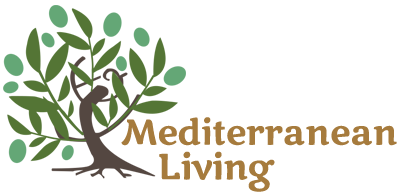
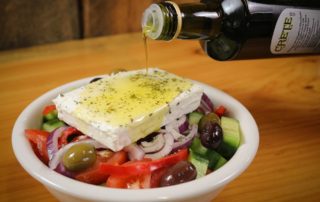
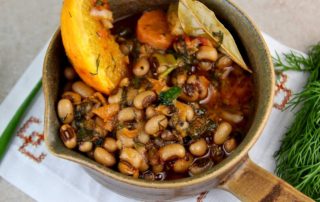
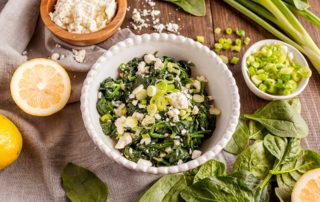
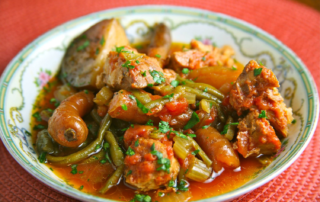
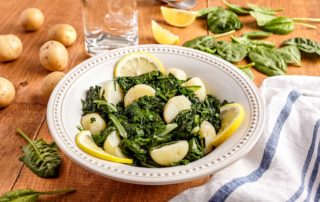

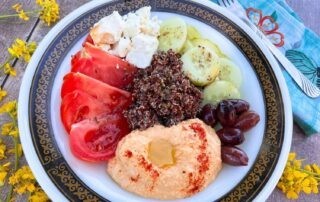
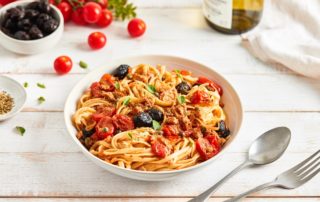
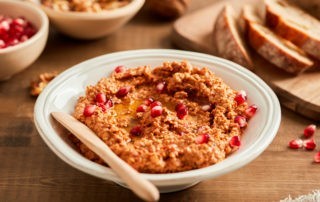
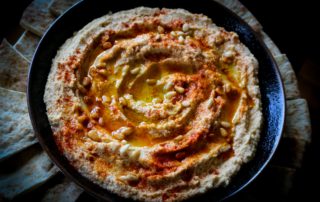
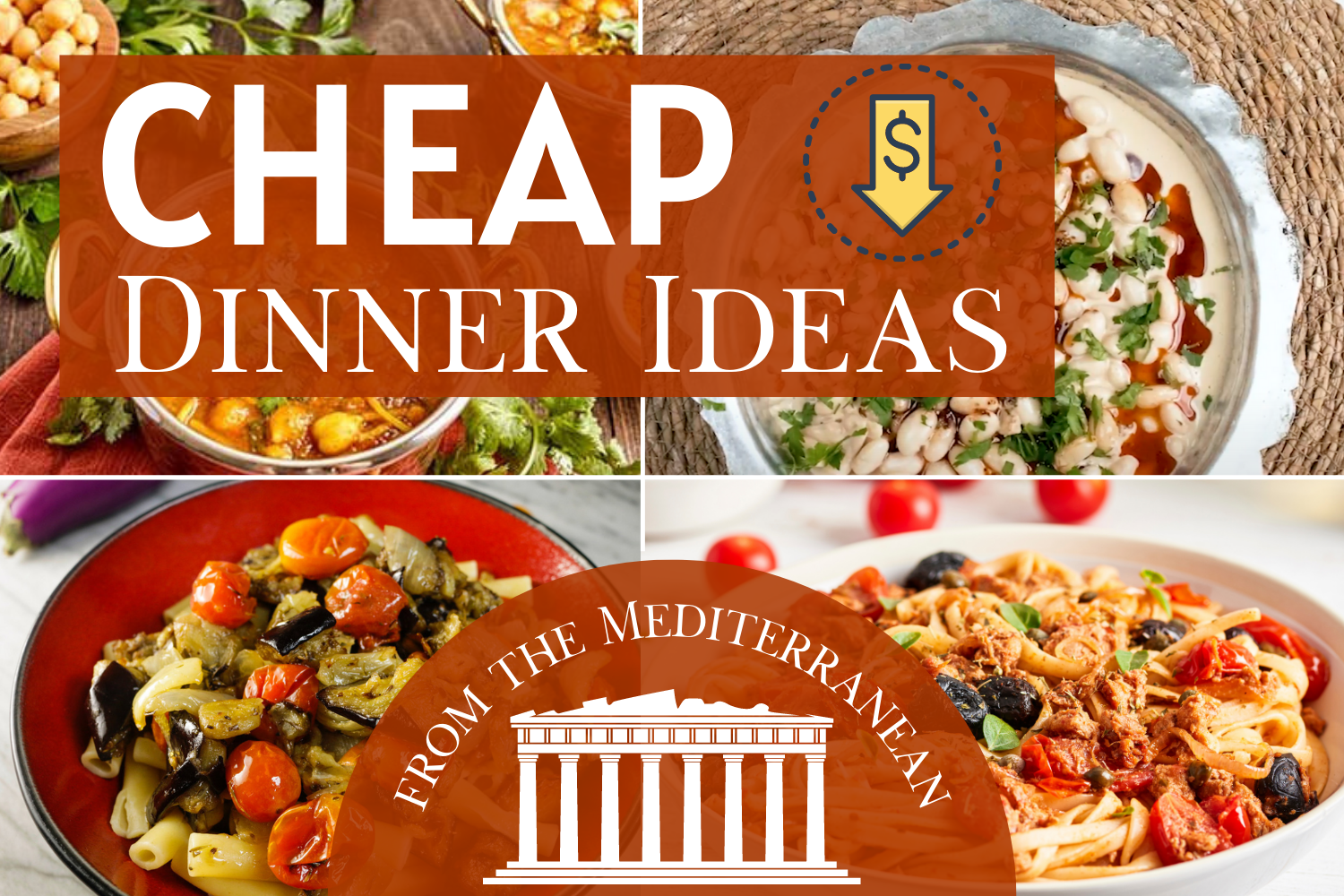
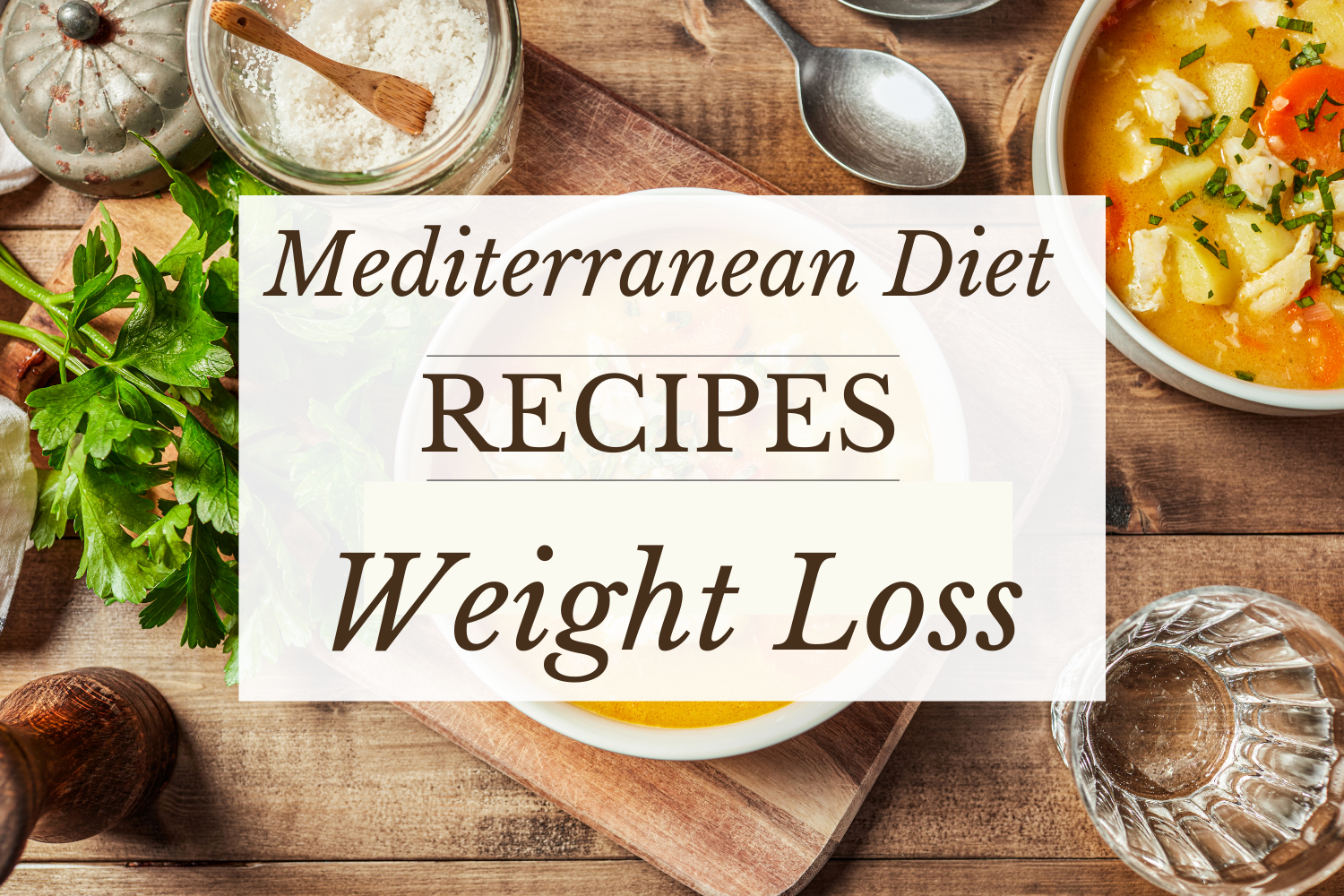







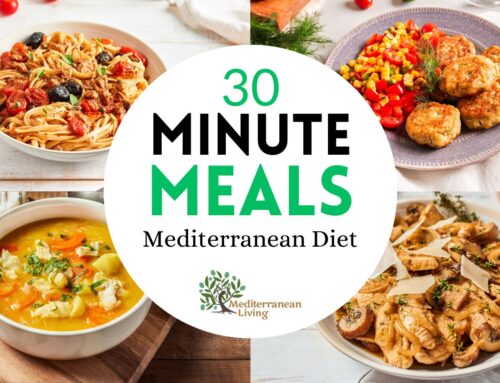
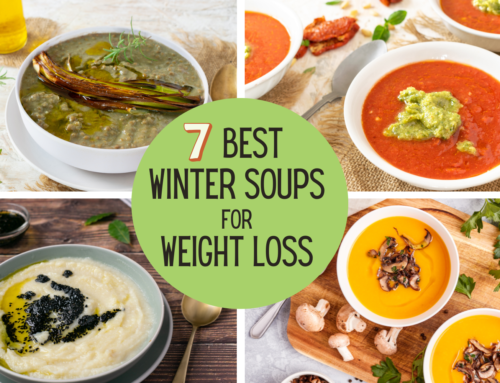
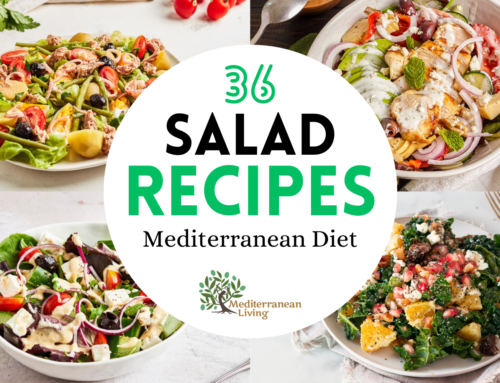
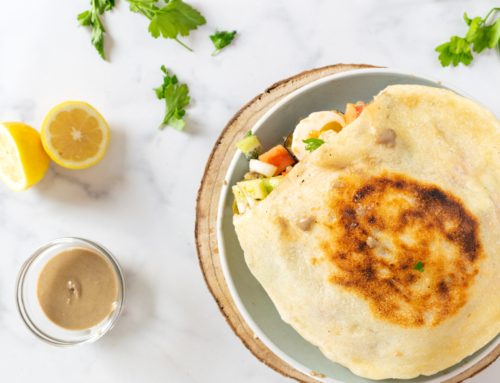
Well researched and written comparison, thank you!
This was mentioned but, it bears more scrunity. Though the Paleo diet claims to be what our ancestors ate, there is no evidence at all all that they ate like that. It’s likely they ate lots of tubers (based on watching people who still live as hunter gatherers). It is also a source of calories. It tends to emphasize meat. Meat, esp higher in the food chain, would not have been common. If they ate meat more frequently, it would have been more rabbit, etc. Eggs would have been very likely, another thing observed in hunter gatherers. Most anthropologists believe they ate grains as well, though probably esp. grasses. They couldn’t bake bread, say, but they could soak and eat cereals.